Stone coated steel roofing is a steel roof covered with a layer of natural stone. They are built with a metal core, usually galvanized steel, which is then coated with a layer of stone chips.
These chips are embedded in an acrylic resin, adding texture, color, and extra protection from rust, wind, hail, and even fire all while giving your home curb appeal that turns heads.
This roofing option is no longer just for commercial buildings or high-end homes. It’s becoming popular in residential areas across the U.S., especially in regions prone to extreme weather.
If you’re weighing options for a new roof, stone-coated steel is definitely one to consider.
What you’ll learn in this guide:
- How it’s made and why it matters
- Why Do Homeowners Choose this
- Cost factors and value over time
- Comparisons to other materials
- Expert insights to help you decide
How Is Stone Coated Steel Roofing Made?
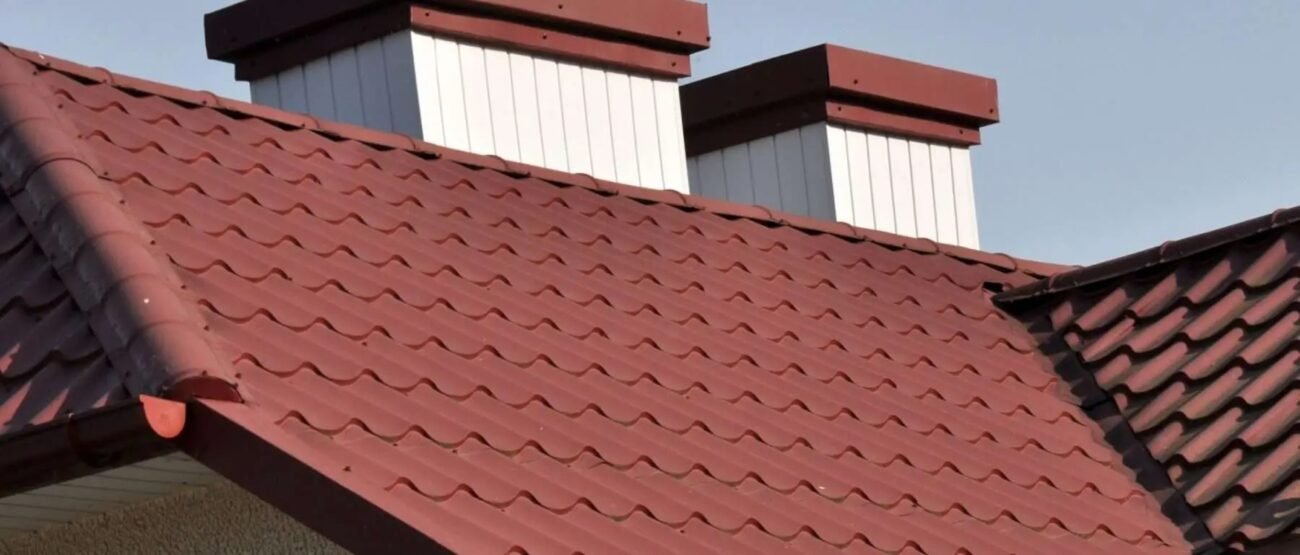
Every stone-coated steel panel begins with a metal core, usually made from high-quality, corrosion–resistant steel. This steel is treated with a zinc or aluminum–zinc alloy coating (commonly known as Galvalume) that stops rust in its tracks.
Next comes the primer, then a basecoat of adhesive. After that, stone granules are pressed onto the surface. These are often made from natural stone like granite and come in various colors to match different home styles.
Once the stone layer is applied, a clear acrylic overglaze seals everything in place. This helps protect the finish from UV rays, acid rain, and other environmental stressors.
The finished product is a lightweight, durable roofing panel that can mimic the look of slate, clay, or asphalt shingles without the weaknesses of those materials.
Pro Tip: Not all stone coatings are created equal. Cheaper brands may skip steps or use lower-grade steel. Always ask about the type of metal core and warranty coverage before buying.
Why Do Homeowners Choose Stone Coated Steel Over Asphalt Shingles?
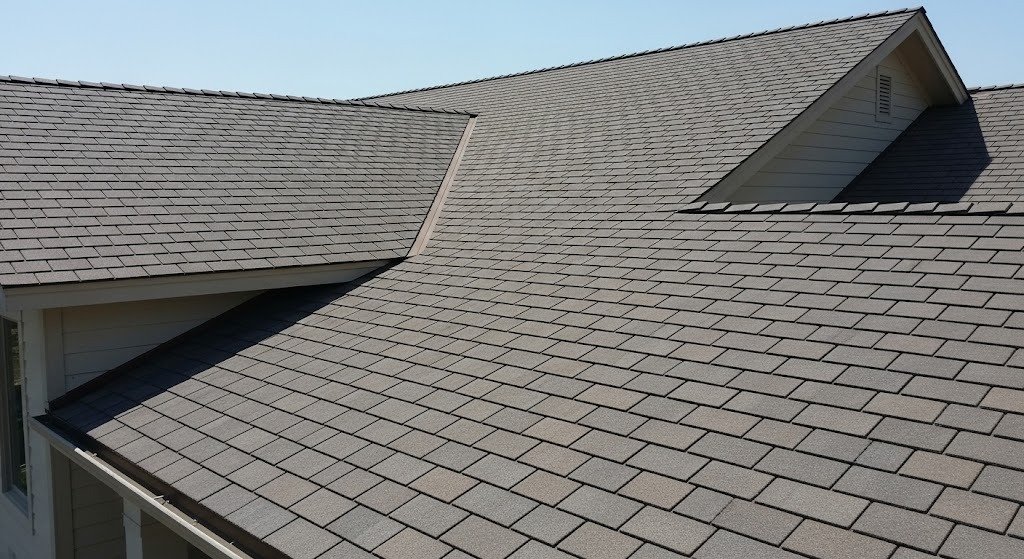
Asphalt shingles are everywhere, they’re cheap, easy to install, and familiar. But they wear out fast, often needing replacement within 15-20 years. Stone-coated steel roofing lasts two to three times longer. That’s up to 70 years with proper maintenance.
One big reason for the switch is durability. Asphalt shingles crack, curl, and fly off during high winds. Stone-coated steel can withstand hurricane-force gusts up to 120 mph. It’s also Class 4 impact rated, meaning it can take hits from large hail without damage.
Plus, there’s curb appeal. Stone-coated metal panels can look like upscale slate or tile roofs but without the weight. This can boost your home’s resale value.
Expert Insight: A 2023 report by Remodeling Magazine found that metal roofs recoup about 61% of their cost on resale, compared to 56% for asphalt shingles.
What are the Benefits of Stone Coated Steel Roofing?
Stone-coated steel roofing is gaining serious attention for good reasons.
Long Lifespan
These roofs can last 50 to 70 years. That’s much longer than asphalt shingles or wood shakes. You won’t need to replace your roof as often, saving money in the long run.
High Durability
Stone-coated steel resists cracking, warping, and weather damage. It can take on wind, hail, fire, and even heavy snow without breaking down.
Energy Efficiency
Thanks to reflective coatings, these roofs help keep your home cooler in summer and warmer in winter. That means lower energy bills all year round.
Lightweight Yet Strong
Despite being metal, these panels are much lighter than traditional tile or slate. That puts less stress on your home’s structure.
Low Maintenance
You don’t have to worry about constant repairs or cleaning. A simple rinse a couple of times a year is usually enough.
Curb Appeal and Versatility
They come in many styles and colors. Whether your home is modern, rustic, or Mediterranean, there’s a stone-coated steel look to match it.
Increased Resale Value
Because of their durability and good looks, homes with these roofs often sell faster and at a better price.
Insurance Discounts
In many storm-prone states, insurers offer discounts for impact-resistant roofing. That could cut your premiums by 10–30%.
What Are the Real Costs? Is It Worth It?
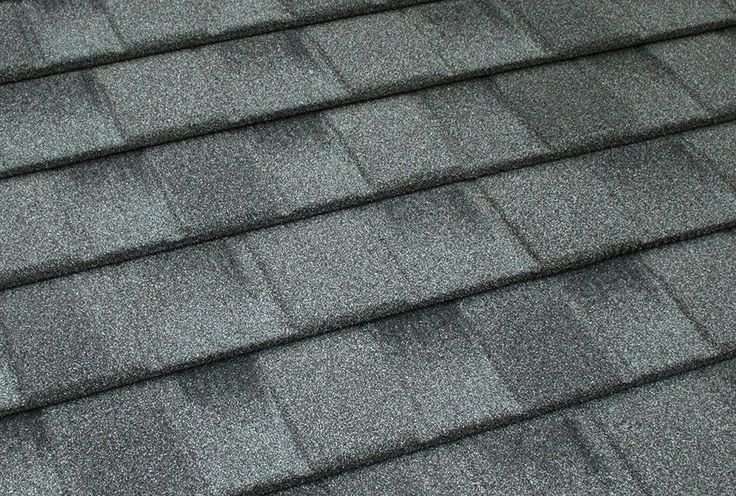
Stone-coated steel roofing isn’t cheap. You’re looking at $8 to $12 per square foot installed. In contrast, asphalt shingles may run between $3 and $5. That’s a big difference upfront.
But take a closer look at the long-term numbers:
| Roofing Material | Cost per Sq. Ft. (Installed) | Lifespan | Total Cost Over 50 Years |
| Asphalt Shingles | $3 – $5 | 15-20 years | ~$15,000 – $25,000 |
| Stone Coated Steel | $8 – $12 | 50+ years | ~$16,000 – $24,000 |
Factor in the savings from fewer replacements, reduced energy bills (thanks to heat-reflective coatings), and possible insurance discounts for impact resistance and the cost evens out.
How Does It Handle Harsh Weather?
Stone-coated steel roofs are designed to perform in extreme conditions:
- Wind Resistance: Rated up to 120–150 mph, ideal for hurricane zones
- Hail Protection: Class 4 impact resistance
- Fire Resistance: Non-combustible and Class A rated
- Snow & Ice: Smooth surface allows snow to slide off, reducing ice dam risks
These features make it a favorite in areas like Colorado, Florida, and Texas where weather events are frequent and severe.
Expert Insight: According to the Insurance Institute for Business & Home Safety, homes with Class 4 roofing see significantly less storm damage and some insurers even offer up to 30% premium reductions.
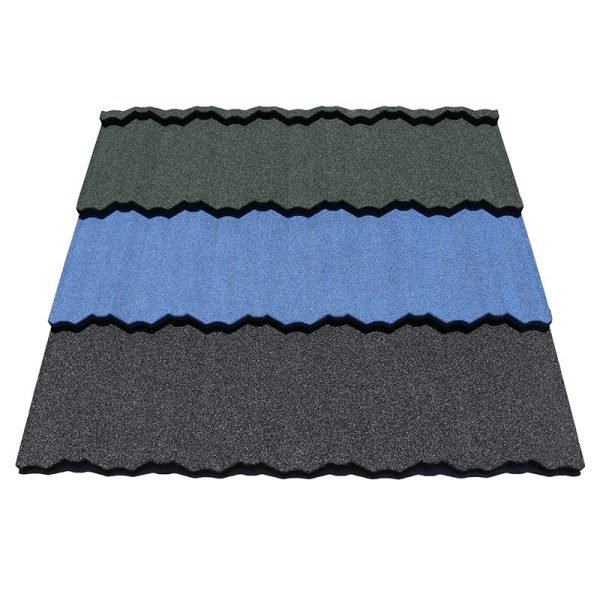
What Styles and Colors Are Available?
Stone-coated steel roofing has different styles and colors. You can choose from styles that mimic:
- Traditional clay tiles
- Wood shakes
- Architectural shingles
- Slate
Colors range from classic terracotta and charcoal to modern shades like weathered copper or deep ocean blue. Most brands offer 15–30 color options.
This variety lets you match your roof to your home’s style, whether it’s Mediterranean, Craftsman, Colonial, or Modern.
Comparison Table:
| Style | Best For | Aesthetic Benefit |
| Tile | Spanish & Mediterranean | Curved, elegant contours |
| Shake | Cottages, Cabins | Rustic wood look |
| Shingle | Suburban & Contemporary | Clean, modern lines |
| Slate | Colonial & Historic Homes | Classic stone appearance |
Are There Downsides You Should Know?
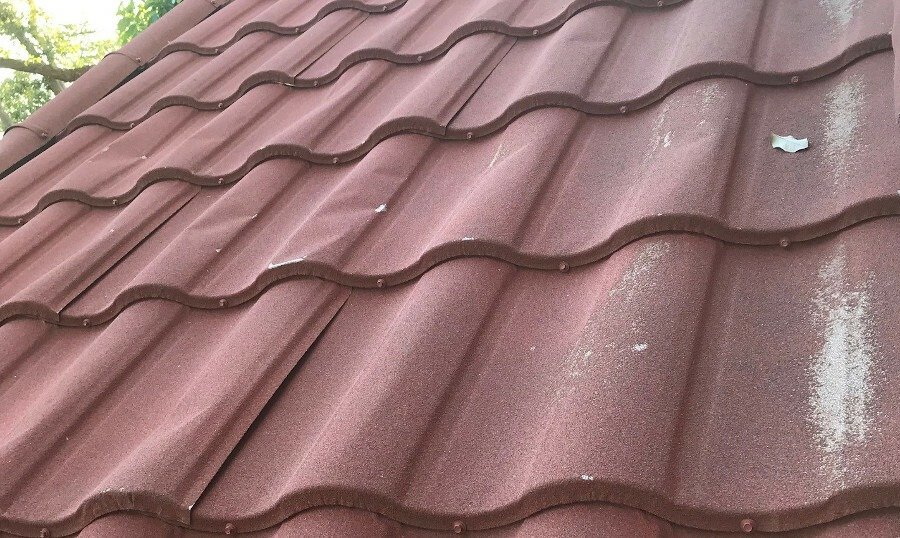
Yes, no roofing system is perfect. Stone-coated steel has a few drawbacks:
- Initial Cost: Higher upfront expense than asphalt or even standard metal.
- Installation Complexity: Requires experienced contractors. Bad installs can void the warranty.
- Noise: Rain can be louder than on traditional shingles, though underlayment helps reduce it.
- Foot Traffic Sensitivity: Walking on it can damage stone chips if not careful.
Expert Tip: Always verify the contractor is certified by the manufacturer. Many brands won’t honor warranties if an uncertified installer does the work.
What Maintenance Is Needed?
Very little. That’s one of the biggest benefits.
- Cleaning: Hose off dirt and debris once or twice a year.
- Inspection: Check after major storms for any chipped granules or dented panels.
- Gutter Maintenance: Keep gutters clear to prevent overflow and ice dams.
Unlike asphalt shingles, you won’t need to replace loose tabs or patch leaks every few years.
Pro Tip: Avoid pressure washers too strong a spray can dislodge granules. A garden hose works just fine.
Installation Tips and Expert Recommendations
Installing stone coated steel roofing isn’t something you want rushed or handled by just anyone. This type of roofing system performs best when every detail, from the underlayment to the fastening pattern, is done with precision.
Choose a certified installer
Stone coated steel may look straightforward, but small mistakes like improper overlap or loose fasteners can lead to leaks or shortened roof life. That’s why working with experienced professionals, like the team at S & R General Construction NYC, makes a big difference. They understand how to handle metal roofing systems in a way that preserves all the strength and weather resistance you’re paying for.
Consider your regional climate
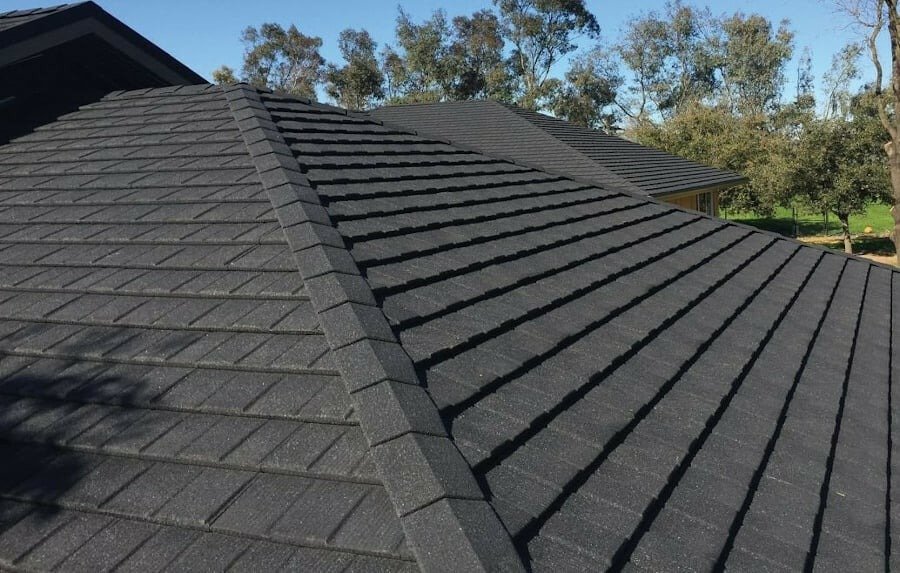
Different areas call for different roofing strategies:
- If you live in a wildfire-prone or hail-heavy zone, don’t skip Class A fire resistance and Class 4 impact-rated panels.
- In hotter cities like parts of New York during the summer, lighter tones and reflective finishes help bring down attic heat and energy bills.
S & R General Construction NYC has worked across Brooklyn, Queens, and Staten Island, where they’ve helped homeowners match the right roofing features to their specific climate and building codes. They know what performs well in coastal air, freeze-thaw conditions, and even urban fire zones.
Warranty checklist
Always ask about warranty coverage. You want lifetime or at least 50‑year protection ideally with hail, wind, and color fade included. Reputable installers will walk you through the details and even help you register the product correctly with the manufacturer.
Snag-free upgrades
Planning to add snow guards, ridge venting, or seamless gutter tie-ins? These extras protect your home and extend the life of the roof. Companies like S & R General Construction NYC include these upgrades in their project planning so you’re not caught off guard later.
Pro Tip: Don’t wait until winter or storm season. Book your installation during shoulder months (spring or early fall) when materials are easier to schedule and crews can work safely.
Final Thoughts: Should You Choose Stone Coated Steel Roofing?
If you want a roof that lasts for decades, resists harsh weather, and looks great while doing it, stone-coated steel roofing is a top contender. Yes, the upfront cost is higher but the long-term value and peace of mind often make up for it.
Just make sure you hire a trained professional, choose a reputable brand, and weigh the style options that best fit your home.
If you’re in the New York City area, S&R General Construction NYC is a trusted name with hands-on experience in installing stone-coated steel roofs that stand the test of time. Their team understands the local climate challenges and can help you choose a style that not only fits your home but performs well for years.
Think long-term. Think beyond the next 10 or 15 years. With stone-coated steel and the right installation partner you’re making a decision your future self will thank you for.
FAQ: Common Questions About Stone Coated Steel Roofing
How long does stone-coated steel roofing last?
Stone-coated steel roofs can last 50 to 70 years or more with minimal maintenance. Their metal core resists rust and decay far longer than asphalt shingles.
Is stone-coated steel roofing noisy in the rain?
While metal can be louder than asphalt, proper underlayment significantly reduces noise. Many homeowners say it’s no louder than a typical shingle roof once installed properly.
Can I walk on a stone-coated steel roof?
Yes, but with care. Always step on flat parts of the panel, near support battens. Excessive or careless walking can damage the stone finish.
Is it suitable for snowy regions?
Absolutely. The smooth surface sheds snow easily, reducing the risk of ice dams. It also supports snow loads better than traditional tiles.
Does stone-coated steel add value to a home?
Yes. It boosts curb appeal, cuts long-term maintenance costs, and often qualifies homeowners for insurance savings. All of this adds to your home’s resale value.
How does the price compare to regular metal roofing?
Stone-coated steel is typically more expensive due to its layered coating and aesthetic finish. But the added protection and visual appeal often justify the cost.

[…] Metal Panels […]